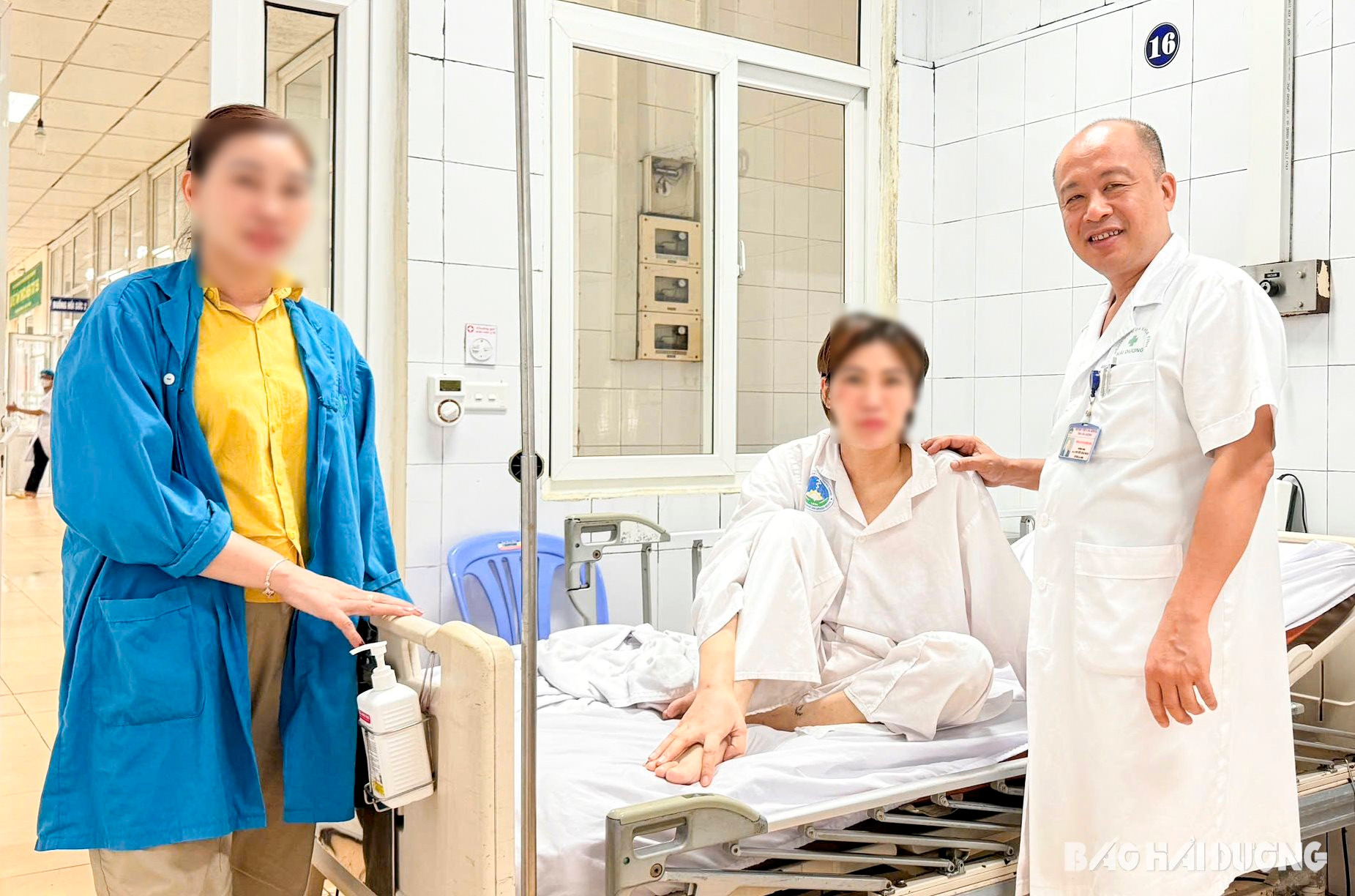On August 19, patient Nguyen Thi B. (45 years old, living on Nguyen Van Linh Street, Thanh Binh Ward, Hai Duong City) was saved and discharged from the hospital after nearly a month of intensive treatment.

This is a rare and especially difficult case with a very high mortality rate. However, with the coordinated efforts of the Emergency and Intensive Care - Anti-Poison Department and the Cardiovascular Center (Provincial General Hospital) and the support from the 108 Central Military Hospital, the patient was saved without any sequelae.
Previously, at around 11:00 a.m. on July 22, Ms. B. was taken to the Provincial General Hospital for hospitalization due to fatigue, dizziness and fainting, then regained consciousness and continued to be in shock. The results determined that Ms. B. was in a state of acute myocardial infarction causing ventricular fibrillation and circulatory arrest.
After more than 90 minutes of continuous emergency care, the patient's heart rate was restored and hemodynamics were stable. At 1:35 p.m., the Emergency Department reported to the hospital leadership to transfer the patient to the 108 Central Military Hospital.
On July 24, the patient was transferred to the Intensive Care - Anti-Poison Department, Hai Duong General Hospital for continued treatment. The patient was still in a deep coma, completely on a ventilator, with an extremely serious prognosis, and a risk of brain loss after multiple cardiac arrests. The Intensive Care - Anti-Poison Department continued to actively resuscitate the patient, prevent infection, and provide comprehensive care, with active physical therapy at the bedside. On July 29, Ms. B. regained consciousness, her muscles were still weak, and she was weaned off the ventilator and successfully removed the endotracheal tube.
On August 19, the patient was conscious. On the afternoon of August 19, the patient was discharged from the hospital.
The successful emergency treatment of the above case is a premise for the hospital staff to perform more advanced techniques in the future, contributing to improving the quality of treatment for patients.
COMPLETE